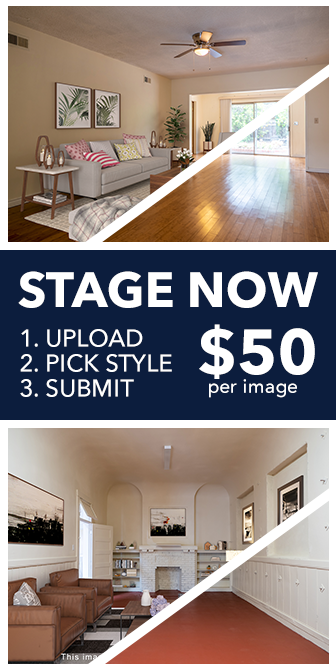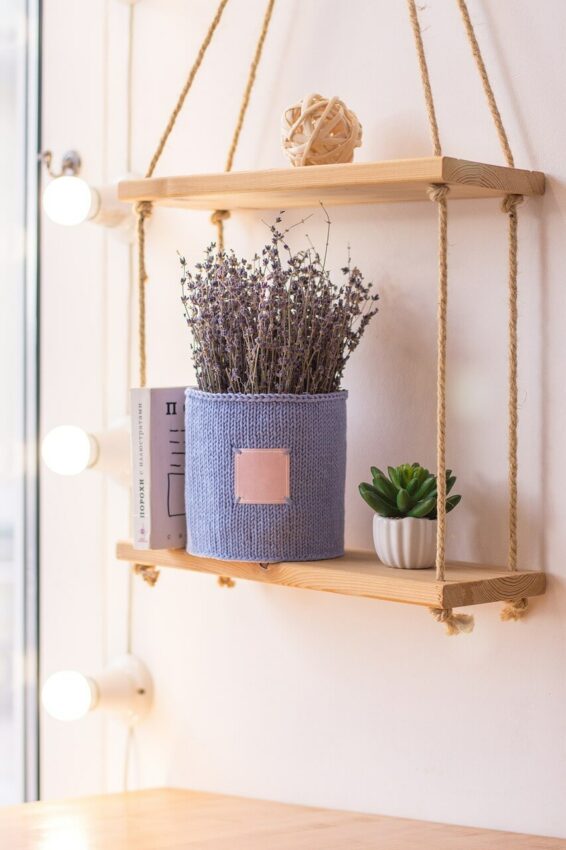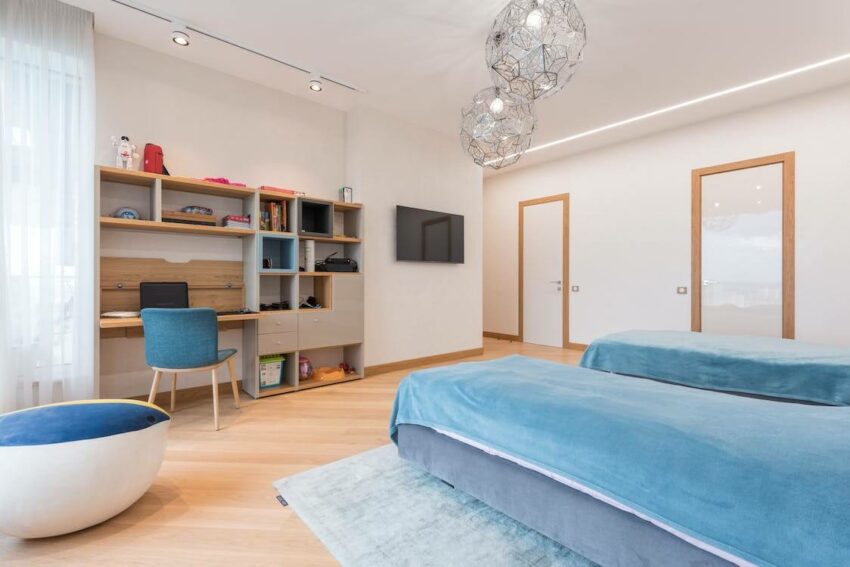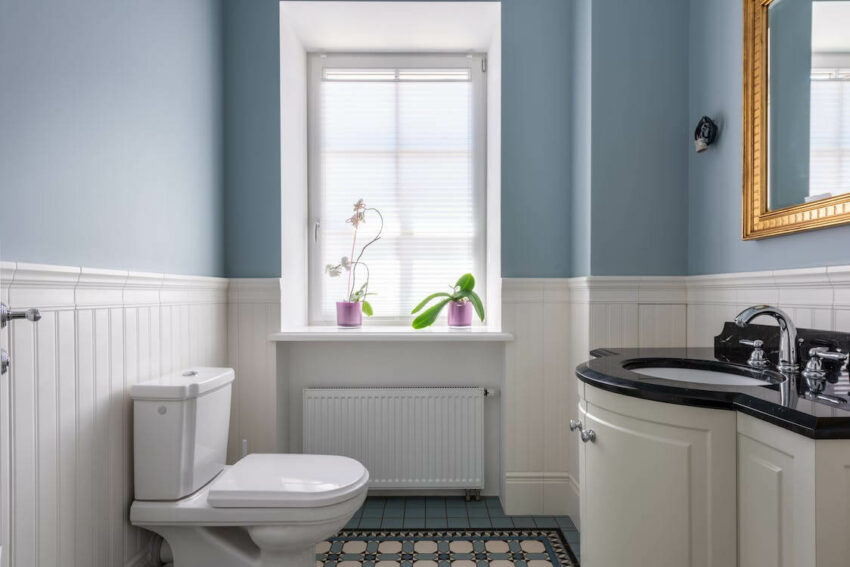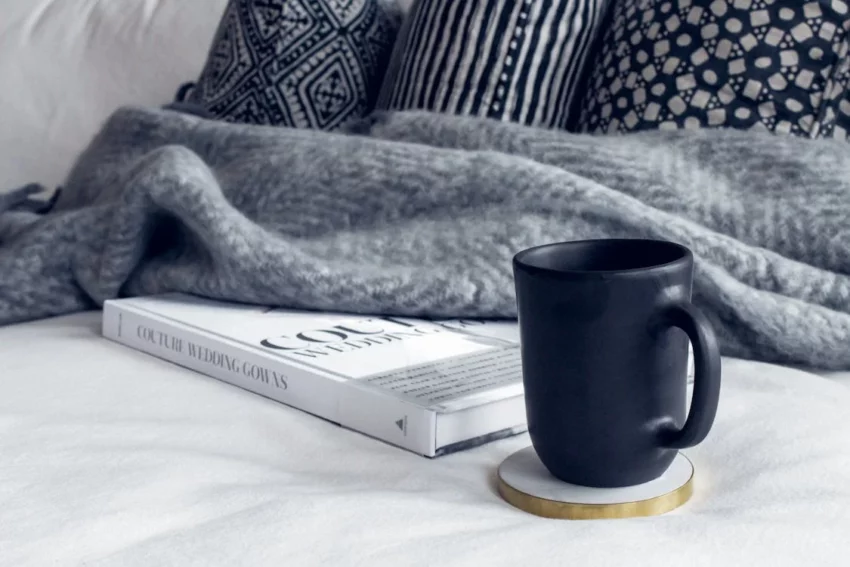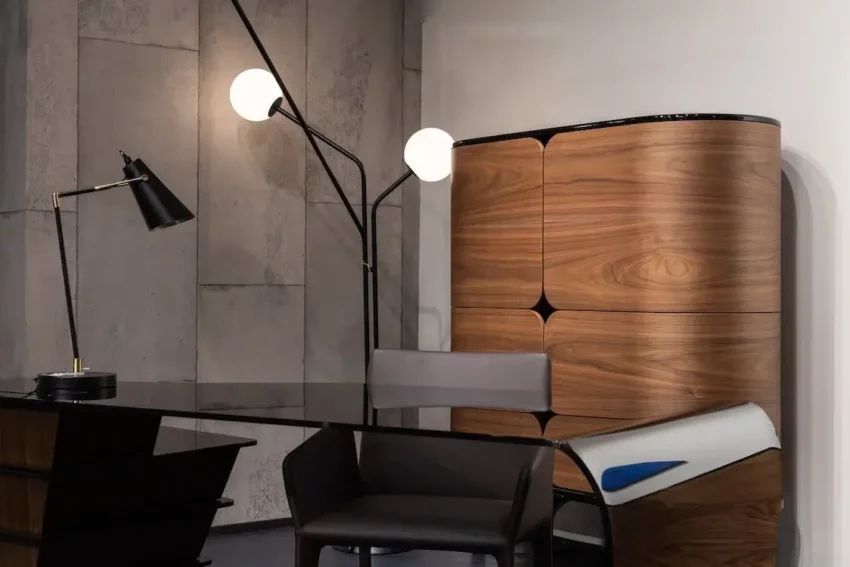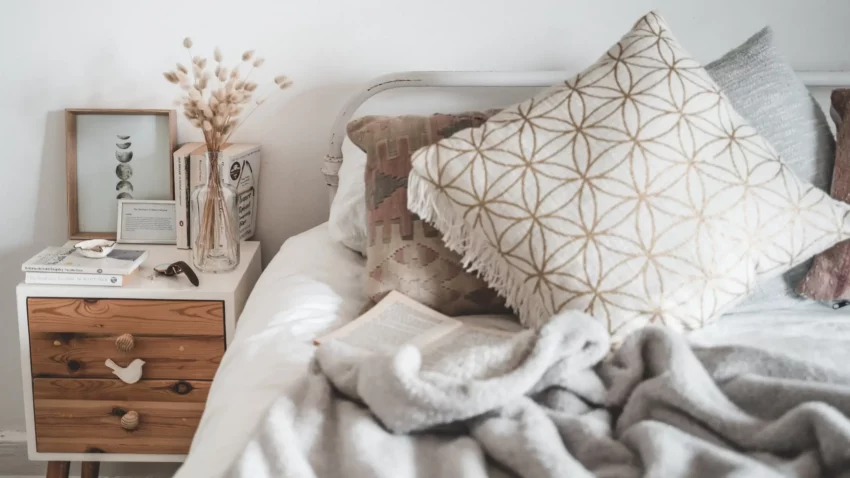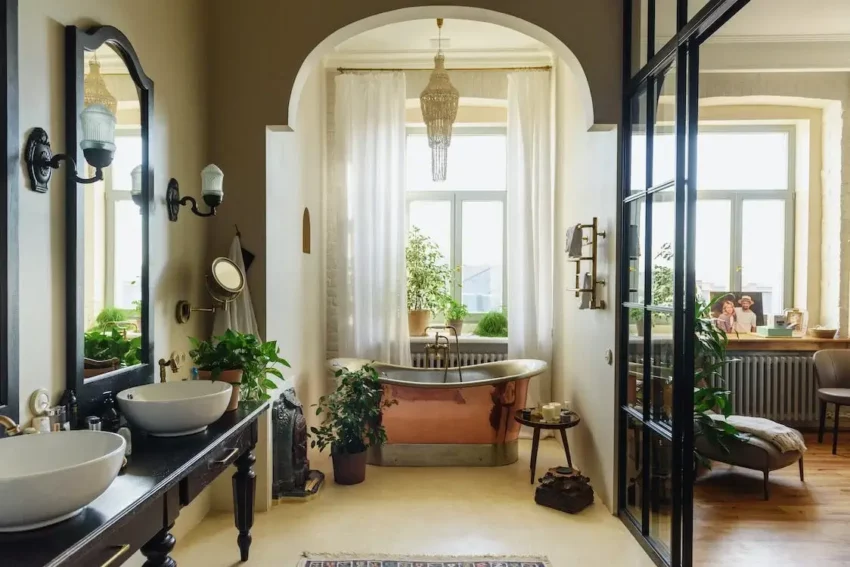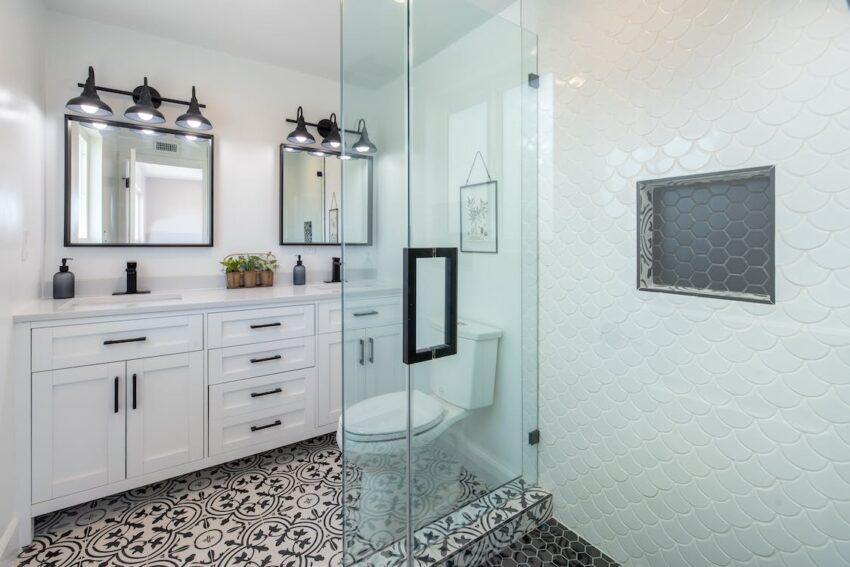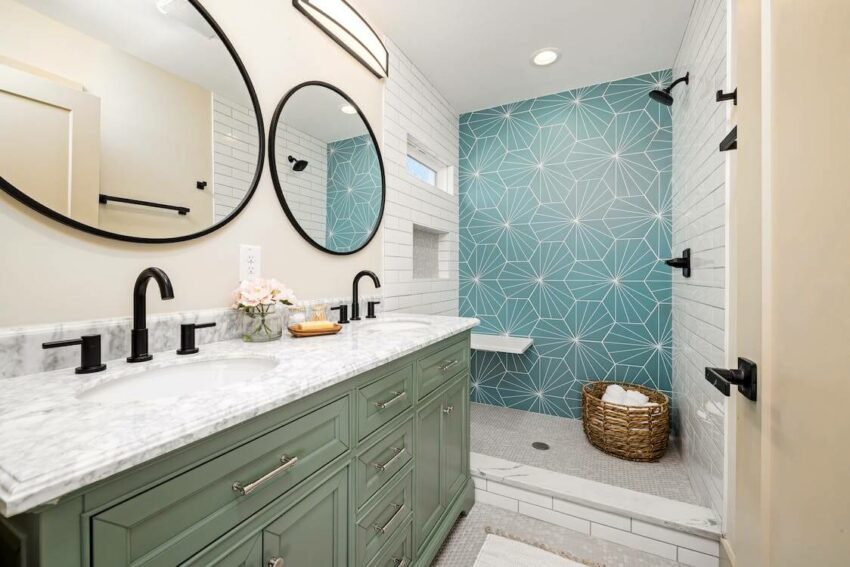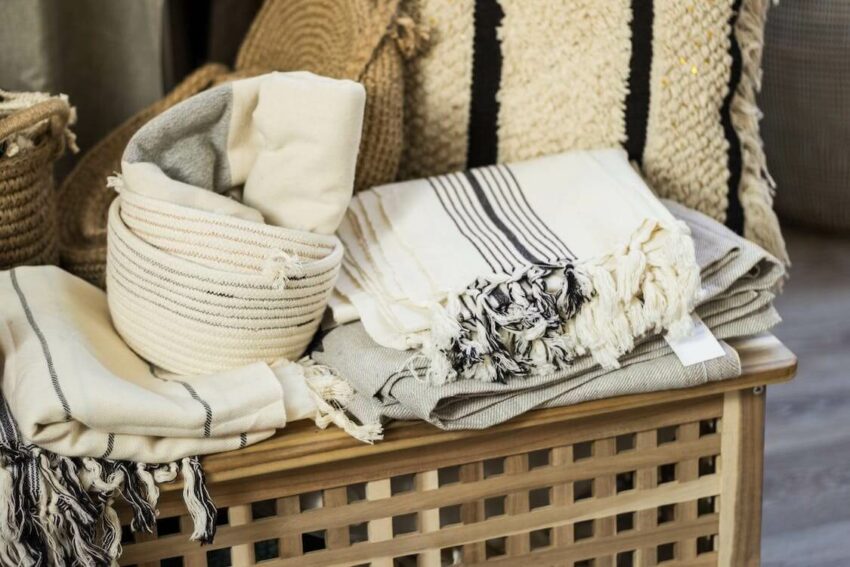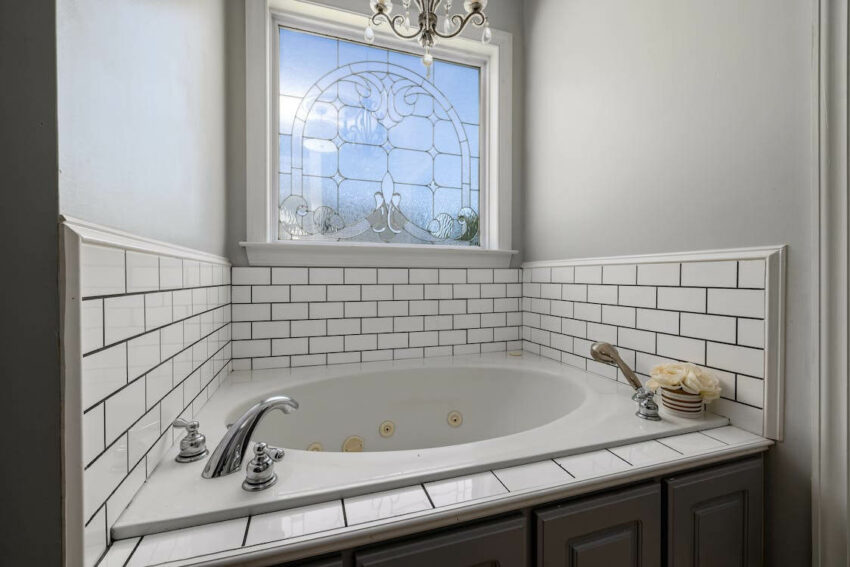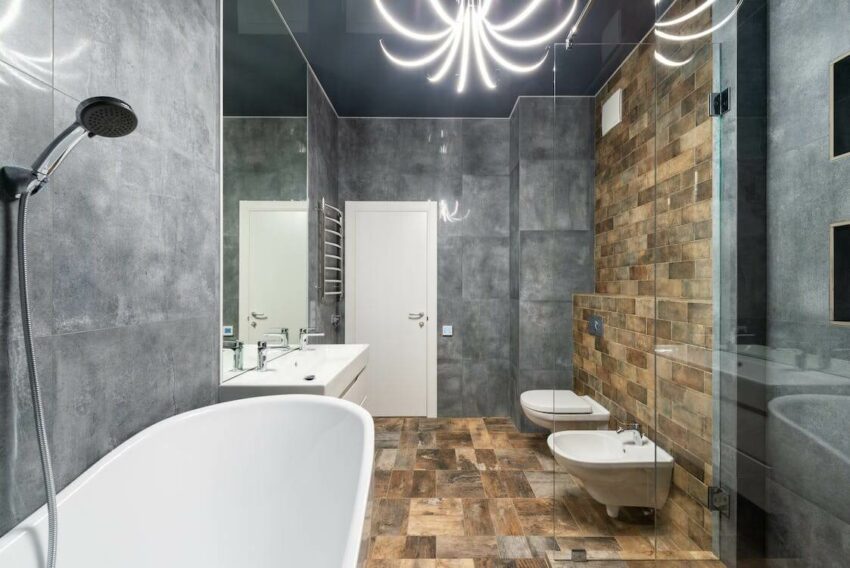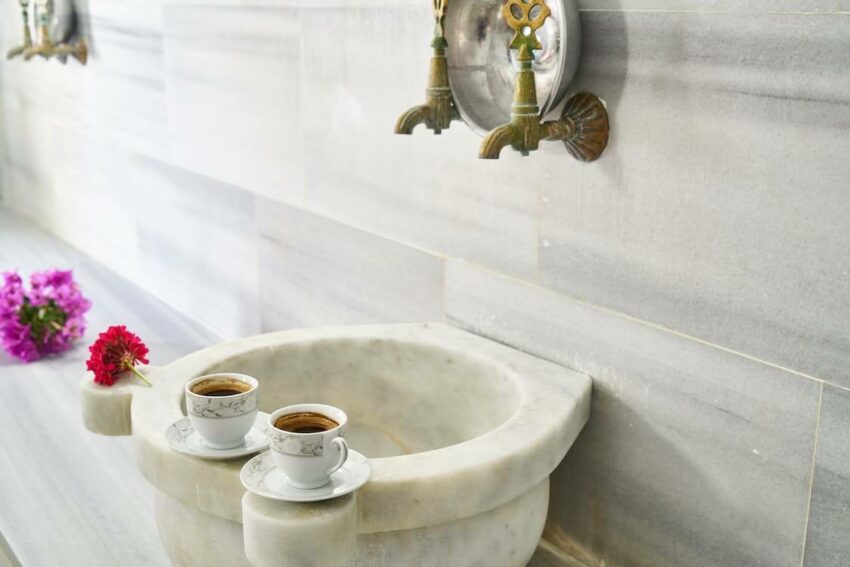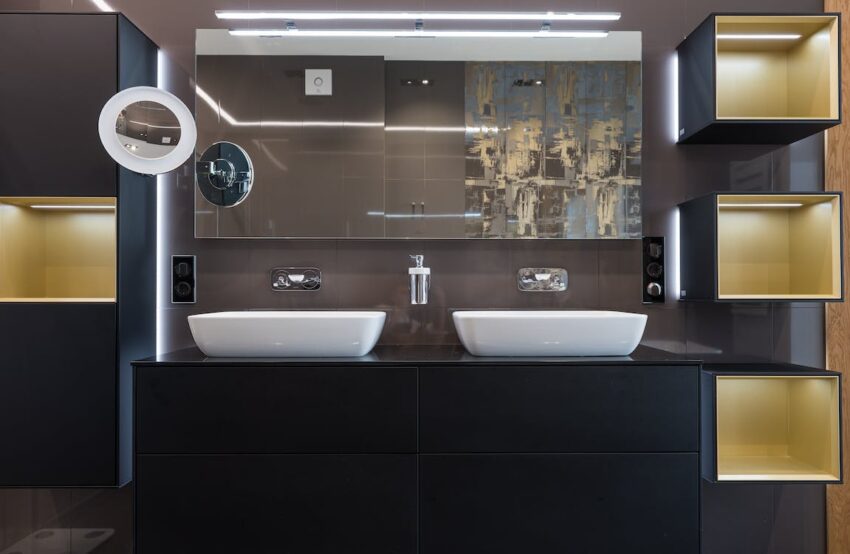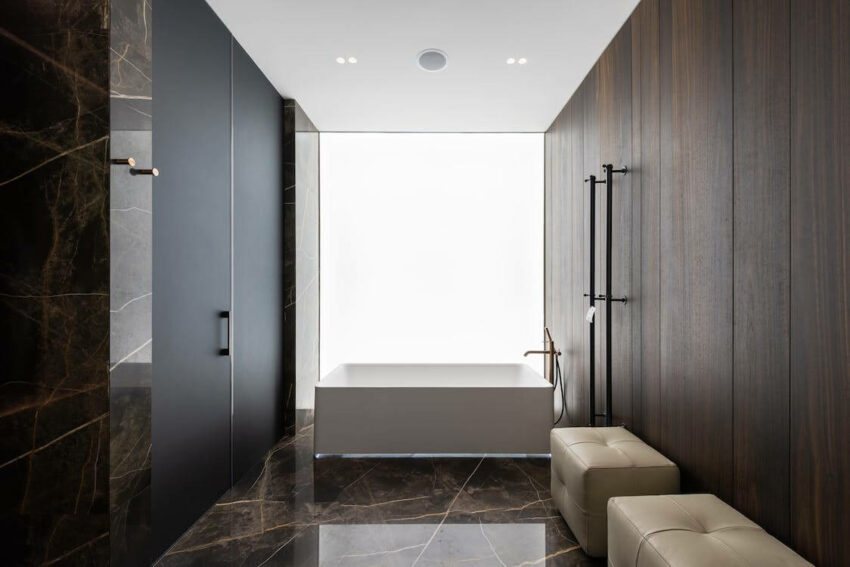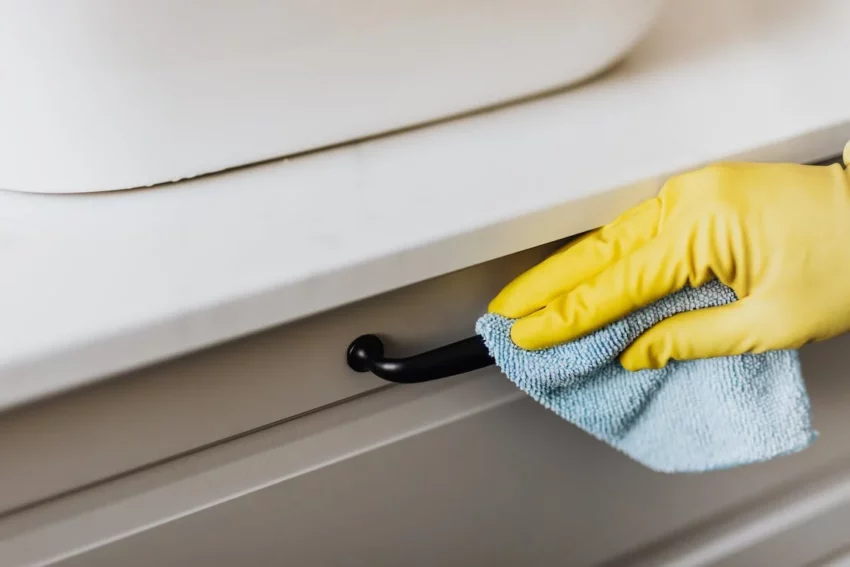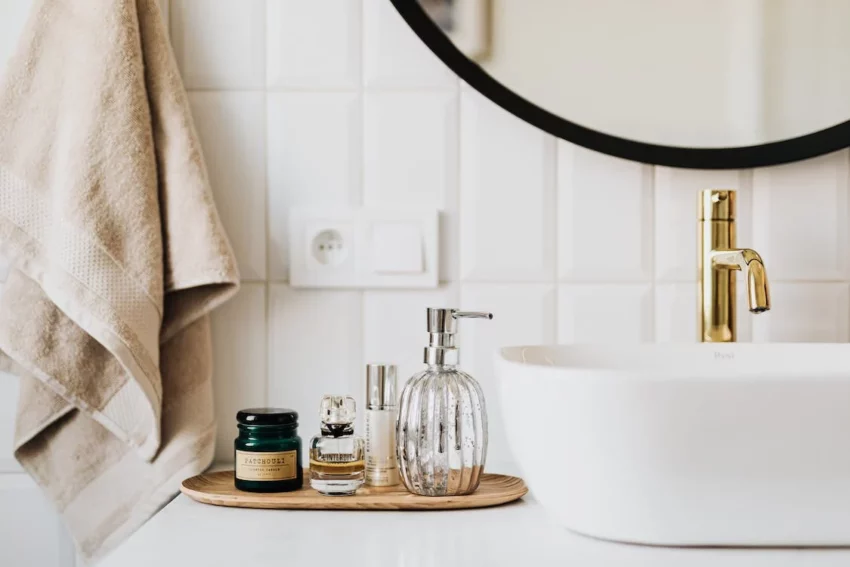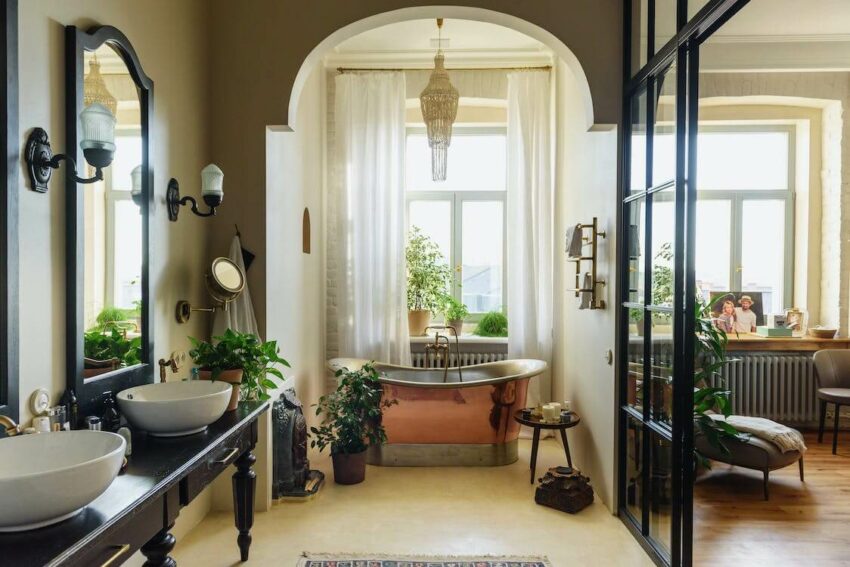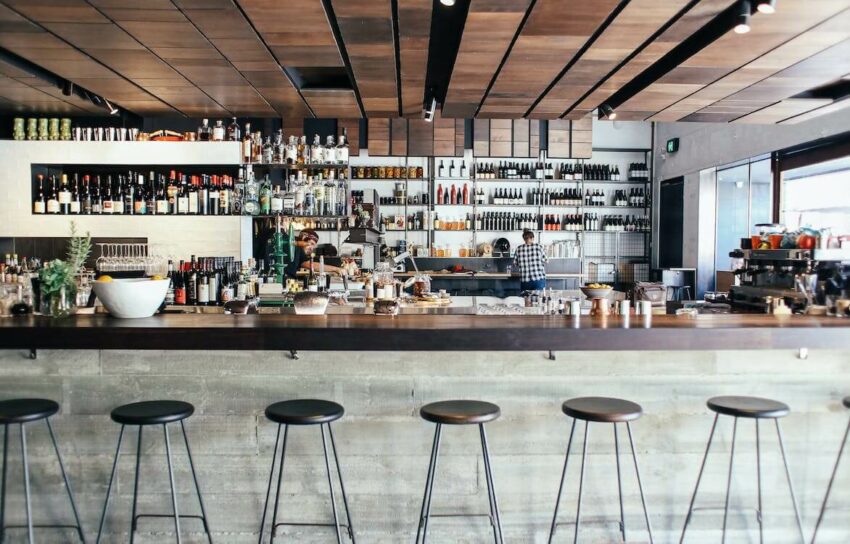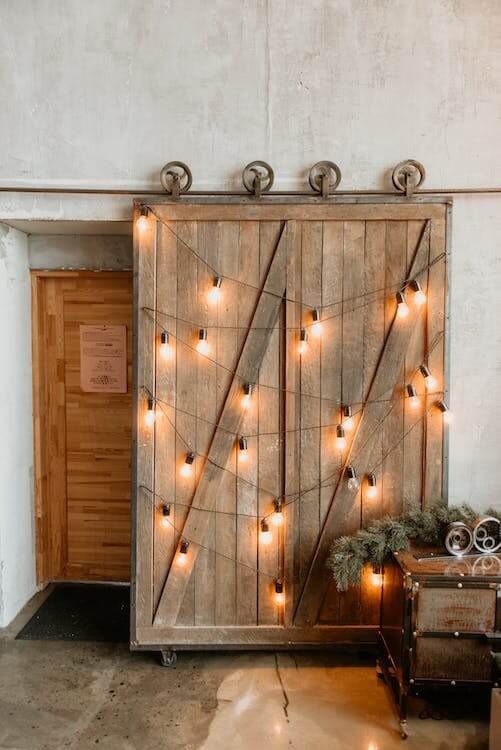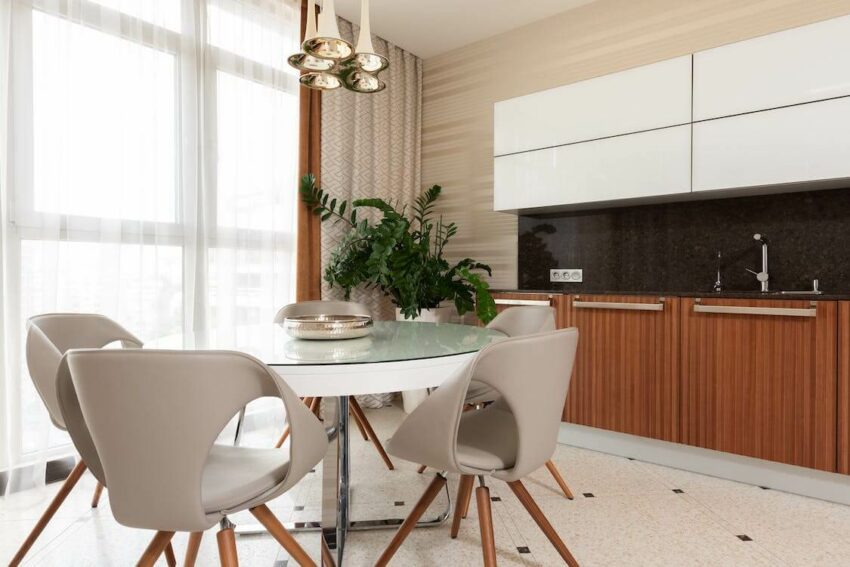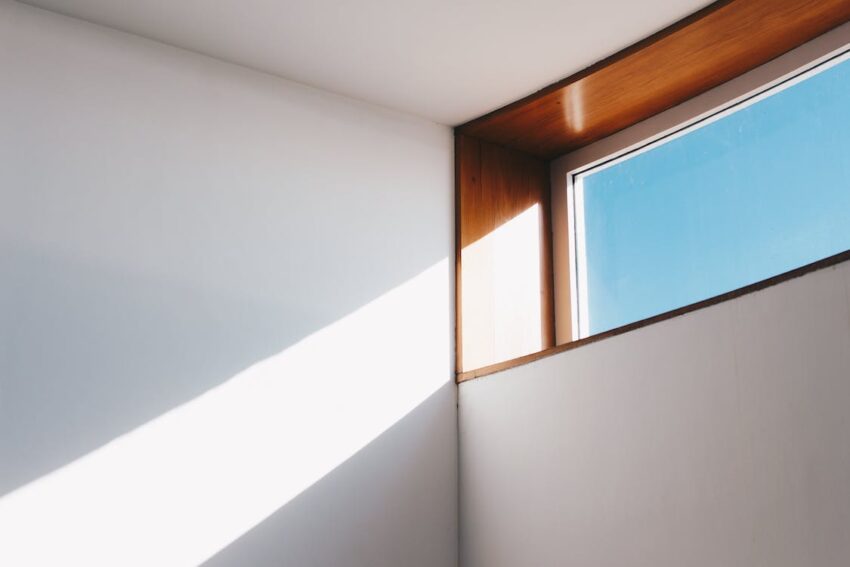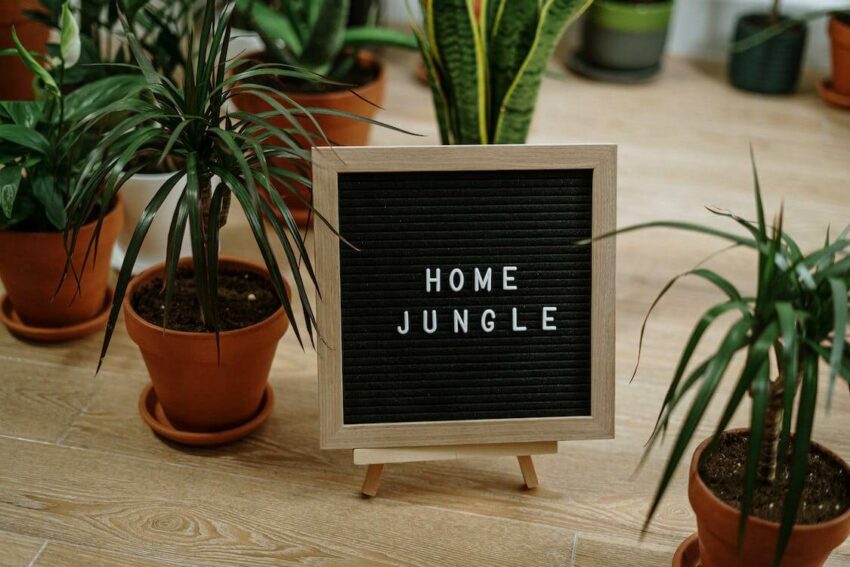“Embarking on a journey to transform your bathroom into a stylish haven? Join us as we unveil our favorite bathroom flooring ideas that combine aesthetics, functionality, and innovation, each promising to elevate your space into a realm of beauty and comfort.”
When it comes to designing or renovating your bathroom, the flooring you choose plays a crucial role in setting the tone for the entire space. Not only does bathroom flooring need to be durable and water-resistant, but it also has the power to contribute to the aesthetic appeal and overall ambiance of the room. With a plethora of options available, it can be overwhelming to choose the perfect flooring for your bathroom. In this blog post, we’ll delve into various bathroom flooring ideas that go beyond the ordinary, bringing style, functionality, and comfort to your personal oasis.

Types of Bathroom Flooring
When it comes to designing or renovating a bathroom, selecting the right flooring is a decision that holds immense significance. The type of flooring you choose not only influences the aesthetics of the space but also affects its functionality and durability. With an array of options available, each boasting its unique characteristics, finding the perfect bathroom flooring can be both exciting and overwhelming. In this exploration of bathroom flooring, we’ll delve into various types of flooring materials, each offering its own set of advantages and design possibilities to help you create a bathroom that aligns perfectly with your vision and lifestyle.
Timeless Elegance with Marble Bathroom Floor Tiles
Marble has been a symbol of luxury and elegance for centuries, and its charm extends to bathroom flooring. Marble tiles offer a timeless look that can transform your bathroom into a sophisticated retreat. The intricate veining patterns and rich color variations of marble bring a touch of opulence to the space. While marble requires proper sealing and maintenance to prevent staining, it’s worth the effort for the sheer beauty it adds to your bathroom.

Marble tiles are synonymous with timeless elegance and luxury, making them a popular choice for bathroom flooring. Renowned for their natural beauty and distinctive veining patterns, marble tiles add a touch of opulence to any space. Available in a range of colors, from classic whites and creams to rich blacks and greens, marble allows for a variety of design options that can match both traditional and modern aesthetics.
One of the standout features of marble tiles is their ability to reflect light, which can make your bathroom feel brighter and more spacious. This characteristic is especially valuable in smaller bathrooms where creating an illusion of space is essential. However, it’s important to note that marble is a porous material, which means it requires regular sealing to prevent staining from water and other liquids.
While the allure of marble is undeniable, it’s essential to consider its maintenance requirements. To keep marble tiles looking their best, they need proper care and cleaning using non-abrasive products. Despite the need for attention, the beauty and sophistication that marble tiles bring to your bathroom make them a top choice for those seeking a truly luxurious atmosphere.
Soothing Natural Vibes with Wood Bathroom Floor
Love the warmth of wood but worried about moisture? Wood-effect tiles are an excellent compromise. These tiles replicate the appearance of wood while being water-resistant and easy to maintain. They create a cozy, natural atmosphere in your bathroom, providing the best of both worlds: aesthetics and practicality. From rustic to modern styles, wood-effect tiles come in various shades and textures to suit your preference.

Wood flooring in bathrooms can add a warm and natural touch to the space, creating a cozy and inviting ambiance. However, using real wood in a bathroom requires careful consideration due to the moisture-prone environment. To address this challenge, many homeowners opt for wood-effect tiles or engineered wood flooring specially designed to withstand damp conditions.
- Wood-Effect Tiles: Wood-effect tiles have gained popularity as a practical alternative to real wood flooring in bathrooms. These tiles replicate the appearance of wood while offering the durability and water-resistance needed for a bathroom setting. They come in a variety of styles, colors, and finishes, allowing you to achieve the look of hardwood without the concerns about warping or water damage.
- Engineered Wood Flooring: Engineered wood flooring is crafted from layers of real wood topped with a protective finish. This construction makes it more resistant to moisture and temperature changes compared to solid hardwood. Engineered wood can be an excellent choice for bathrooms, as long as it’s properly sealed to prevent water from seeping between the planks. It’s important to choose a type of engineered wood that is explicitly labeled as suitable for bathrooms.
When installing wood or wood-effect flooring in bathrooms, proper installation and maintenance are key:
- Sealing and Waterproofing: Whether you choose real wood or wood-effect tiles, ensure that the flooring is properly sealed to prevent moisture from penetrating. For real wood, opt for a high-quality waterproof sealant.
- Regular Maintenance: Wipe up water spills promptly to prevent damage and mold growth. Use bathroom rugs or mats near sinks and the shower area to minimize water exposure to the flooring.
- Good Ventilation: Adequate ventilation is essential to reduce humidity levels in the bathroom, which can help preserve the condition of the wood or wood-effect flooring.
- Cleaning Products: Use gentle, non-abrasive cleaning products specifically designed for wood or tile flooring to prevent damage to the surface.
- Periodic Inspection: Regularly inspect the flooring for any signs of water damage, warping, or discoloration. Address any issues promptly to prevent further deterioration.
In conclusion, while the warmth and beauty of wood flooring can enhance your bathroom’s aesthetics, it’s crucial to choose the right type of wood or wood-effect material that can withstand the bathroom environment. Proper installation, maintenance, and attention to sealing and waterproofing are essential to ensure the longevity and beauty of your bathroom’s wood flooring.
Understated Luxury of Porcelain Bathroom Floor
Porcelain tiles are renowned for their durability and versatility. They are available in a wide array of colors, sizes, and designs, making it easy to find the perfect fit for your bathroom. The polished surface of porcelain tiles reflects light, making the space appear larger and more inviting. Additionally, porcelain’s resistance to moisture, stains, and scratches makes it a practical choice for bathrooms with high foot traffic.

Porcelain flooring is a popular choice for bathrooms due to its durability, versatility, and water-resistant properties. It offers a wide range of design options and can effectively mimic the look of various materials, making it an excellent choice for achieving different aesthetics in your bathroom.
- Durability: Porcelain tiles are known for their exceptional durability. They are hard and dense, making them resistant to scratches, stains, and wear. This durability ensures that your bathroom flooring will withstand daily use and remain looking pristine for years to come.
- Water Resistance: Porcelain tiles are fired at high temperatures, which makes them highly water-resistant. This quality is crucial in a bathroom where exposure to moisture is constant. Properly installed and sealed porcelain flooring can withstand water spills, splashes, and even standing water without absorbing moisture.
- Versatility in Design: Porcelain tiles come in a wide array of colors, patterns, and textures, allowing you to achieve various styles in your bathroom. Whether you’re aiming for a sleek modern look, a classic vintage vibe, or a rustic feel, there’s a porcelain tile design to match your vision.
- Low Maintenance: Cleaning porcelain flooring is relatively easy. Regular sweeping or vacuuming to remove dirt and debris, followed by mopping with a mild detergent, is usually sufficient to keep the tiles clean. The water-resistant nature of porcelain tiles also prevents mold and mildew growth.
- Visual Appeal: Porcelain tiles can imitate the appearance of natural stone, wood, concrete, and other materials. Advanced printing technology enables manufacturers to create tiles that closely resemble these materials while providing the practical benefits of porcelain.
- Temperature Regulation: Porcelain tiles have excellent thermal conductivity, which means they can effectively absorb and distribute heat. This makes them a great option if you’re considering installing radiant heating systems beneath your bathroom floor.
When installing porcelain tiles in your bathroom, keep the following considerations in mind:
- Proper Installation: Professional installation is key to ensuring that the tiles are laid evenly and securely. Properly installed tiles will minimize the risk of water seepage and cracking over time.
- Grout Sealing: The grout lines between porcelain tiles should be properly sealed to prevent water from seeping through and causing damage.
- Texture and Finish: While porcelain tiles offer various textures and finishes, be mindful of selecting tiles with a slip-resistant finish, especially for bathroom areas that are prone to getting wet.
- Maintenance: Avoid using abrasive cleaners or tools that could scratch the porcelain surface. Also, promptly clean up any spills to prevent staining.
In conclusion, porcelain flooring is an excellent choice for bathrooms due to its durability, water resistance, and design versatility. With proper installation and maintenance, porcelain tiles can provide a beautiful and practical flooring solution that elevates the overall look and functionality of your bathroom.
Chic and Sleek with Concrete Flooring
For a contemporary and industrial vibe, consider concrete flooring. Concrete lends a minimalistic and chic feel to the bathroom, allowing other design elements to shine. It’s also a highly customizable option, as you can choose from various finishes, colors, and textures. To prevent discomfort from cold surfaces, you can opt for radiant heating beneath the concrete.

Concrete flooring is a unique and modern choice for bathrooms, offering a sleek and industrial aesthetic that can transform the space into a contemporary oasis. While it might not be the traditional choice, concrete flooring has gained popularity for its durability, customization options, and minimalist appeal.
- Modern Aesthetic: Concrete flooring exudes a minimalist and industrial vibe that is becoming increasingly popular in contemporary bathroom design. Its clean lines and neutral color provide a versatile backdrop that allows other design elements, such as fixtures and décor, to shine.
- Durability: Concrete is known for its exceptional durability, making it a perfect option for high-traffic areas like bathrooms. When properly sealed, it can withstand water, spills, and heavy foot traffic without deteriorating.
- Customization: Concrete flooring offers a high level of customization. It can be poured and finished to achieve various textures, from smooth and polished to slightly textured or even stamped with patterns. Additionally, concrete can be stained or dyed in a wide range of colors, allowing you to personalize your bathroom flooring.
- Radiant Heating Compatibility: Concrete is an excellent conductor of heat, which makes it a great candidate for installing radiant heating systems beneath the floor. This feature adds a touch of luxury and comfort, especially during colder months.
- Easy Maintenance: Sealed concrete is relatively easy to clean and maintain. Regular sweeping and occasional mopping are usually sufficient to keep it looking its best. If you choose a polished finish, the surface becomes even more resistant to stains.
- Sealing for Protection: Proper sealing is crucial for concrete flooring in bathrooms. A high-quality sealer creates a protective barrier against moisture and stains. Be sure to reseal the floor periodically to maintain its integrity.
- Acoustic Benefits: Concrete flooring can help reduce noise transmission, making it a practical choice for multi-story homes where noise from the bathroom might travel to other parts of the house.
However, there are a few considerations to keep in mind when opting for concrete flooring in bathrooms:
- Coldness: Concrete can be quite cold underfoot, especially during the colder months. Using bath rugs or incorporating radiant heating can mitigate this issue.
- Professional Installation: Concrete flooring requires professional installation. Improper installation can lead to cracking, unevenness, or other structural issues.
- Proper Drainage: Proper sloping and drainage are crucial to prevent water from pooling on the surface. Without proper drainage, water could seep into cracks and lead to damage.
- Slip Resistance: Depending on the finish, concrete flooring can be slippery when wet. Opt for a textured finish or incorporate slip-resistant mats in areas prone to getting wet.
In conclusion, concrete flooring can add a contemporary edge to your bathroom design while offering durability and customization options. With the right installation and maintenance, concrete flooring can become a standout feature in your bathroom, elevating its overall aesthetic and functionality.
Vinyl Bathroom Floors for Budget-Friendly Creativity
If you’re on a budget but don’t want to compromise on style, vinyl flooring offers an affordable yet creative solution. Modern vinyl flooring comes in a plethora of designs, including patterns that mimic natural stone and wood. It’s comfortable underfoot, resistant to water, and relatively easy to install, making it an attractive option for DIY enthusiasts.

Vinyl flooring has evolved significantly over the years and has become a popular choice for bathroom floors due to its affordability, versatility, and water-resistant properties. Modern vinyl flooring comes in a variety of styles, patterns, and textures, making it a practical and stylish option for your bathroom.
- Affordability: Vinyl flooring is one of the most budget-friendly options for bathroom floors. It provides a cost-effective way to achieve the look of more expensive materials, such as hardwood or stone, without the high price tag.
- Water Resistance: Vinyl is inherently water-resistant, making it a suitable choice for bathrooms where water exposure is a constant concern. It can withstand splashes, spills, and even standing water without warping or damage.
- Design Variety: Vinyl flooring offers an impressive range of design possibilities. It can mimic the appearance of various materials, including wood, stone, ceramic tiles, and more. This versatility allows you to choose a style that matches your bathroom’s aesthetic.
- Comfort Underfoot: Vinyl flooring is softer and more comfortable underfoot compared to harder materials like tile or concrete. This can be especially appreciated in bathrooms where you might be walking barefoot.
- Ease of Installation: Vinyl flooring is relatively easy to install, making it a viable option for DIY projects. It comes in various formats, including sheets, tiles, and planks, allowing you to choose the installation method that suits your skill level and preference.
- Low Maintenance: Vinyl is simple to clean and maintain. Regular sweeping or vacuuming, followed by mopping with a mild detergent, will keep it looking its best. Its water-resistant nature also makes it less prone to mold and mildew growth.
- Resilience: Vinyl flooring is resilient and can handle the demands of everyday life. It’s resistant to scratches and dents, making it a suitable option for bathrooms with high foot traffic or families with children.
- Warmth: Unlike some colder flooring options, vinyl feels warmer underfoot, which can be particularly appealing in bathrooms, especially during colder seasons.
However, there are a few considerations to keep in mind when choosing vinyl flooring for your bathroom:
- Quality Matters: Opt for high-quality vinyl flooring to ensure better durability and water resistance. Cheaper vinyl might not hold up as well in the long run.
- Subfloor Preparation: Proper preparation of the subfloor is essential for a successful vinyl installation. It should be smooth, clean, and free of any imperfections.
- Seam Sealing: If you’re installing vinyl tiles or planks, ensure that the seams are properly sealed to prevent water infiltration.
- Environmental Impact: While modern vinyl flooring has made significant improvements in terms of eco-friendliness, some vinyl products can still contain potentially harmful chemicals. Look for vinyl labeled as low-VOC (volatile organic compounds) or explore more environmentally friendly flooring options if this is a concern for you.
In conclusion, vinyl flooring offers a budget-friendly and versatile solution for bathroom floors. With its water resistance, comfort, and design options, it can help you create a stylish and functional bathroom space that suits your needs and style preferences.
Elevate with Mosaic Bathroom Floor
Mosaic tiles are all about artistry and personal expression. They allow you to create intricate patterns, images, or even a gradient of colors on your bathroom floor. Mosaics are available in various materials, including glass, ceramic, and natural stone, enabling you to achieve a unique look that resonates with your style. They work particularly well in smaller bathrooms as accents or in designated areas.

Mosaic bathroom floors are a creative and visually striking choice that can add a touch of artistry and personality to your space. Mosaic tiles are small, intricate pieces that come together to create intricate patterns, images, or color gradients on your bathroom floor. This type of flooring allows for endless customization, making your bathroom truly unique.
- Artistic Expression: Mosaic bathroom floors are like works of art for your space. The intricate patterns and designs you can create with mosaic tiles add a layer of artistic expression that can reflect your personal style and preferences.
- Design Variety: Mosaic tiles come in a wide range of materials, including glass, ceramic, natural stone, and more. This variety allows you to play with textures, colors, and shapes to achieve the exact look you desire.
- Small Spaces: Mosaic flooring works particularly well in smaller bathrooms, where it can serve as a focal point or an accent that adds visual interest and depth to the space without overwhelming it.
- Borders and Accents: Mosaic tiles can be used to create borders, accents, or medallions within a larger tile layout, adding a touch of uniqueness to a more traditional flooring style.
- Durable and Water-Resistant: Like other types of tile, mosaic tiles are durable and water-resistant, making them suitable for bathrooms. Properly sealed, they can handle the moisture and foot traffic typical in bathroom environments.
- Grout Variety: The choice of grout color can significantly influence the final look of your mosaic floor. You can choose a grout color that blends seamlessly or contrasts dramatically with the tiles to emphasize the pattern.
- DIY Possibilities: While intricate designs might require professional installation, simpler mosaic patterns can be tackled as DIY projects if you’re comfortable working with tiles.
- Cleaning and Maintenance: Cleaning mosaic floors generally involves regular sweeping or vacuuming to prevent dirt and debris buildup in the grout lines. Periodic mopping with a mild solution will help maintain their beauty.
However, there are certain considerations when opting for a mosaic bathroom floor:
- Labor and Installation: Mosaic flooring can be time-consuming and labor-intensive to install, especially for intricate patterns. Professional installation might be necessary for complex designs.
- Cost: Mosaic tiles can range in price depending on the material, design complexity, and quality. Custom designs or rare materials might come at a higher cost.
- Slip Resistance: Some mosaic tiles can be slippery, especially if they have a smooth surface. Opt for tiles with a textured finish or use a non-slip mat in areas that might get wet.
- Maintenance of Grout: Grout lines between mosaic tiles can accumulate dirt and grime over time. Regular cleaning and occasional resealing will help prevent discoloration and mold growth.
In conclusion, mosaic bathroom floors offer a wonderful opportunity to showcase your creativity and add a distinctive touch to your space. With a wide range of design options and materials available, you can create a stunning mosaic that suits your style while enjoying the durability and functionality of tile flooring.

Conclusion
Your bathroom floor deserves more attention than being a mere functional surface. It can be a canvas for creativity, a foundation for your design vision, and a reflection of your personal taste. Whether you’re drawn to the classic elegance of marble, the contemporary charm of concrete, or the budget-friendly options like vinyl, the variety of bathroom flooring ideas available today ensures that you can find the perfect fit for your space. By carefully considering factors like durability, style, and maintenance requirements, you can create a bathroom that not only stands up to daily use but also elevates your overall bathing experience.
Looking for more great style and design tips for your bathroom?
- Bathroom Counter Decor Style Guide
- The Best Tips to Organize Your Bathroom Drawers
- Our Favorite Bathroom Flooring Ideas
- The Elegance of Bathroom Vanities
- Styles of Bathroom Backsplashes
- Trends in Bathroom Ceiling Paint
- Stylish Bathroom Chandeliers
- Our Guide to Bathroom Windows
- Interior Decorators Guide to Bathroom Towels
- Our Favorite Bathroom Tiles
- Designers Bathroom Mirror Tips
- Interior Design and Style Bathroom Ideas





